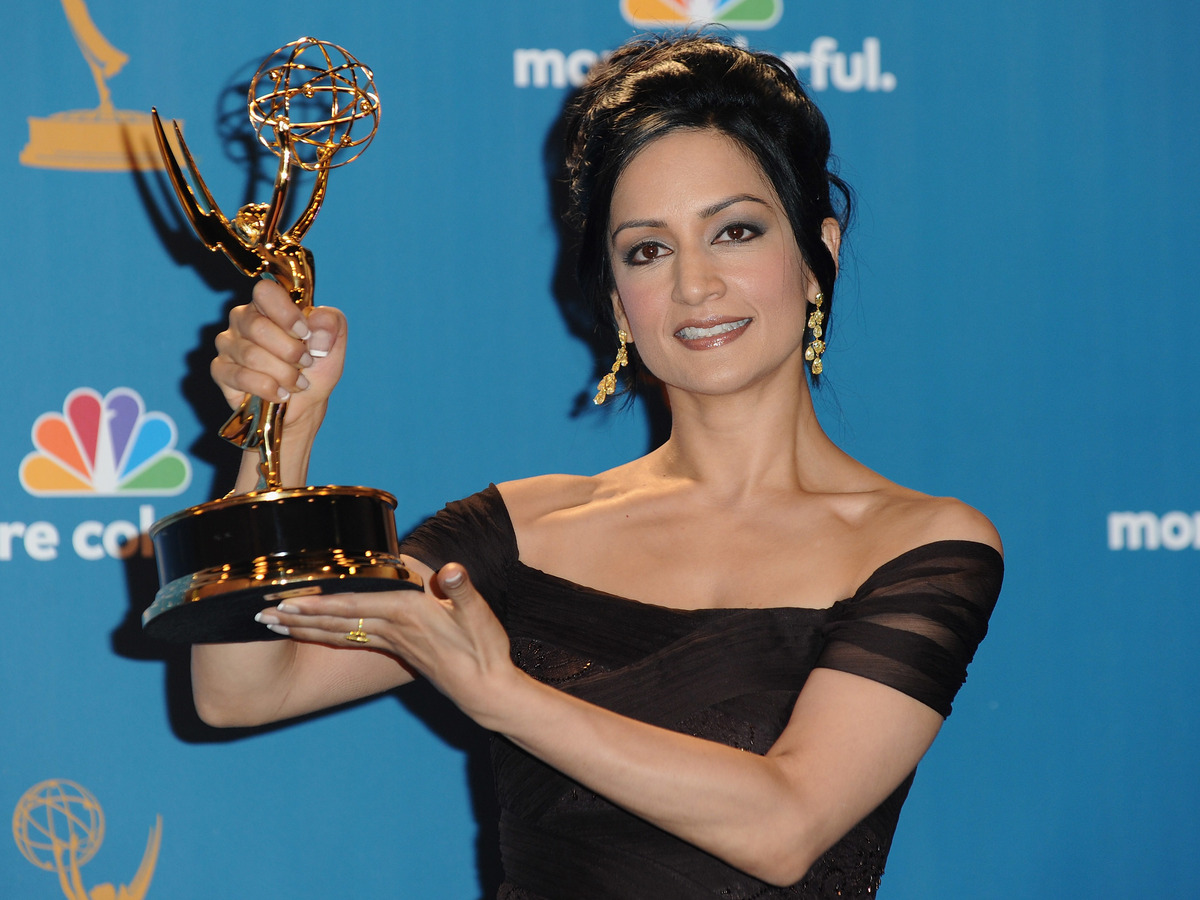
Archie Panjabi at the Emmy Awards in 2010. Panjabi, a non-Muslim actress, played a Muslim character in the 2018 British limited series Next of Kin, a show discussed in a new study from the USC Annenberg Inclusion Initiative.
Alberto E. Rodriguez/Getty Images
hide caption
toggle caption
Alberto E. Rodriguez/Getty Images

Archie Panjabi at the Emmy Awards in 2010. Panjabi, a non-Muslim actress, played a Muslim character in the 2018 British limited series Next of Kin, a show discussed in a new study from the USC Annenberg Inclusion Initiative.
Alberto E. Rodriguez/Getty Images
Muslims make up 25% of the global population and Islam is the fastest-growing religion in the world — but Muslims only comprise 1% of characters shown on popular televisions series in the U.S., the U.K., Australia and New Zealand.
Those are just two of the findings in a new report issued Wednesday by the USC Annenberg Inclusion Initiative. Researchers investigated 200 top-rated television shows from 2018 and 2019 that aired in these four countries, and surveyed 8,885 characters with speaking roles.
Apart from the numbers deficit, the majority of the Muslim characters were depicted as adult Middle Eastern or North African [MENA] men, despite the fact that Muslims are the most racially and ethnically diverse religious group in the world. These characters were also linked to violent acts and behavior. Over 30% of the 98 Muslim characters were perpetrators of violence, while nearly 40% were targets of such attacks. Less than one-third were portrayed as native English speakers, underscoring depictions of Muslims as “foreigners.”

Furthermore, the ratio of male Muslim characters to female ones in these television shows is 174 to 1; and when women and girl characters d0 appear, they are typically portrayed as “fearful and endangered.” Across the nearly 9,000 characters surveyed as part of the study, only one identified as an LGBTQ Muslim.
“The findings in this study reveal how rarely content creators think about including Muslims in popular storytelling– particularly girls and women,” said Stacy L. Smith, founder of the USC Annenberg Inclusion Initiative in a press release issued alongside the study. “As a result, viewers would have to watch hours and hours of content before seeing even a single portrayal of a Muslim character– with even more time required to find a portrayal that is not linked to violence or extremism.”
Stay connected with us on social media platform for instant update click here to join our Twitter, & Facebook
We are now on Telegram. Click here to join our channel (@TechiUpdate) and stay updated with the latest Technology headlines.
For all the latest Entertainment News Click Here
For the latest news and updates, follow us on Google News.
